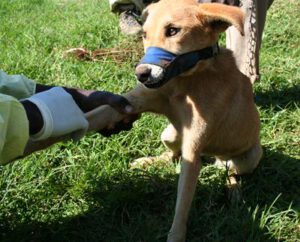
The Rexes and Spots of the world have been man’s best friend for 15,000 years. But when and where did humans begin domesticating these furry companions?
Previous theories suggested that the domesticated dog originated in East Asia and then spread to Africa, Oceania and the Americas. But a recent study by Cornell University researchers has found Mr. Chompers may not have originated in East Asia after all.
Boyko et al. analyzed more than 300 SNPs throughout the genome, as well as a chunk of the maternally inherited mitochondrial DNA and an assortment of other genetic markers in hundreds of village dogs from seven different regions of Egypt, Uganda and Namibia, along with African dog breeds, Puerto Rican street dogs, and mixed-breeds from the United States.
The results, published online ahead of print this month in the Proceedings of the National Academy of Sciences, showed that African village dogs were the most genetically diverse of all the dogs screened. This diversity was comparable to that in East Asian village dog populations.
Mixed-breed dogs and even African breeds, such as Pharaoh hounds and Salukis, lack such genetic diversity since they have been artificially selected and bred.
African village dogs consistently showed this diverse, indigenous ancestry, with the exception of dogs from central Namibia and Giza who showed genetic signs of some mixing with other non-native dogs. This mixing could be due to earlier mating with human-bred dogs or the relative proximity of Giza to Eurasia, which is home to most known breeds.
“Like ancient human populations, these ancient dog populations developed genetic signatures characteristic of their geographic locale,” the authors wrote.
Africa has the highest amount of genetic diversity in humans because humans originated and have been living there longer than on any other continent. Similarly, the high genetic diversity of African village dogs suggests that our canine friends may have also originated in Africa. But the similar level of diversity among East Asian village dogs means that region can’t be ruled out as the birthplace of Canis lupus familiaris. So, more research will be needed to determine exactly when and where canines diverted from baring fangs to chasing boomerangs.
Photo credit: Corin Boyko



